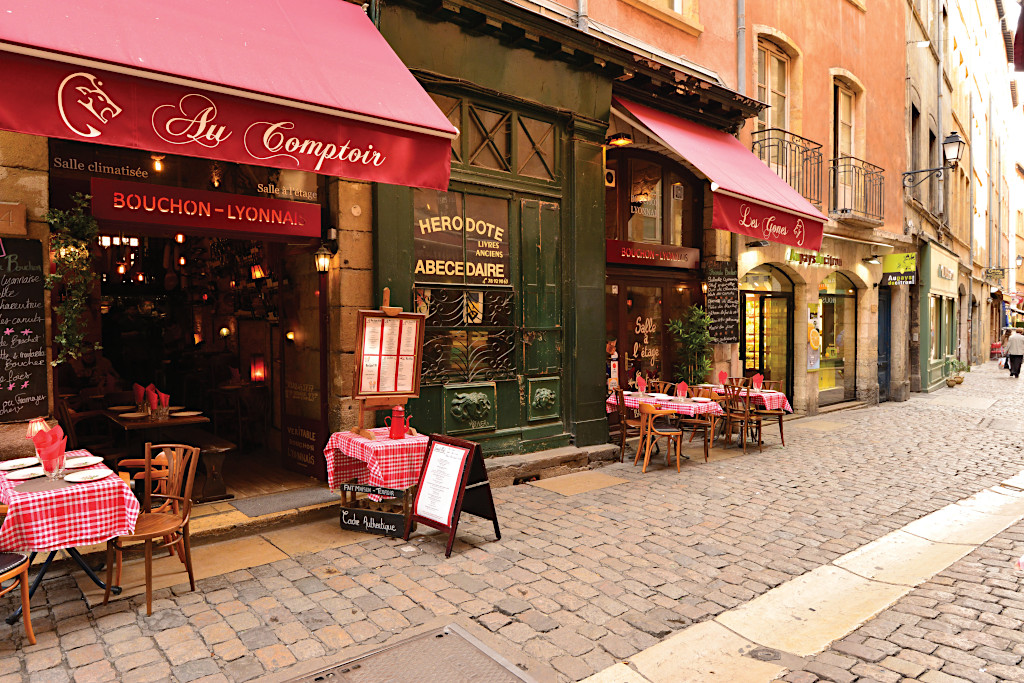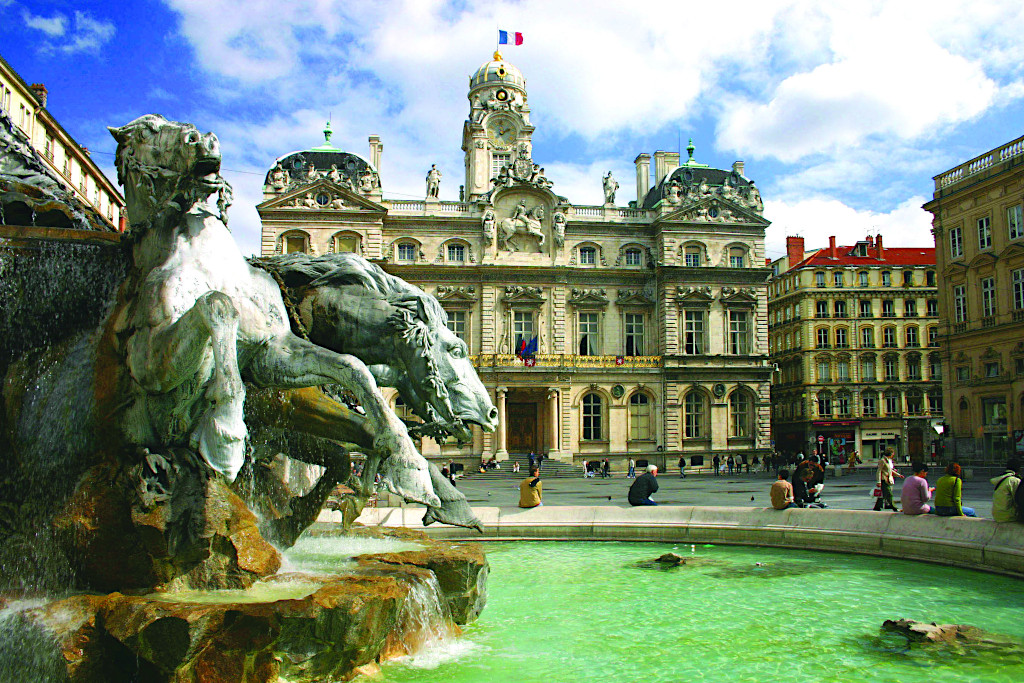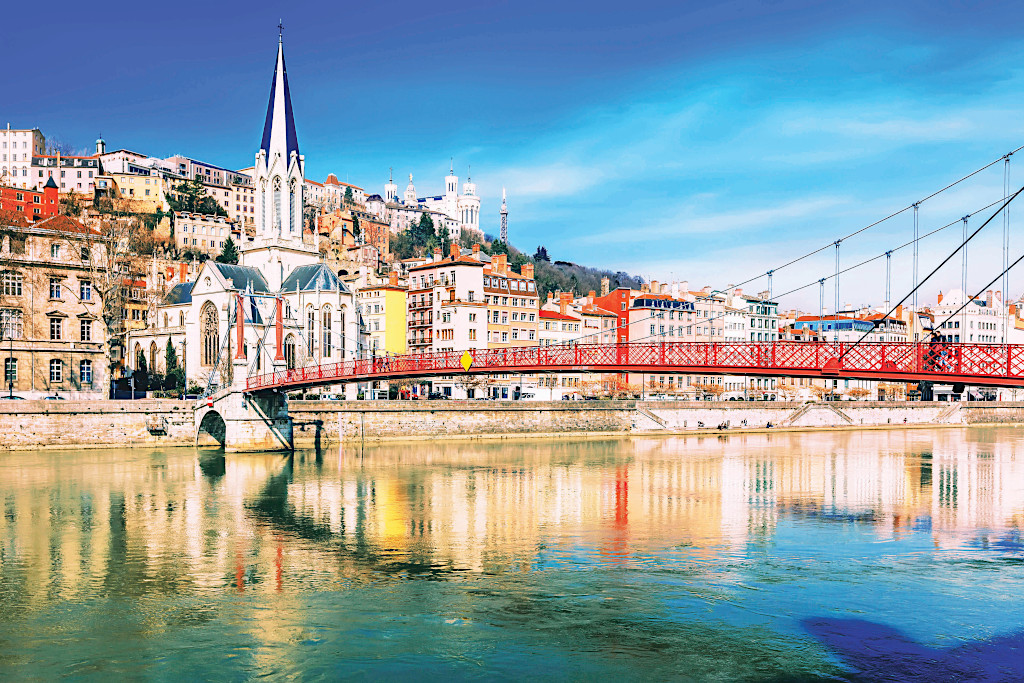Although Lyon is the third largest city in France, it’s still under the wire in terms of international tourism compared to Paris, Marseilles, Nice, and Bordeaux. Lyon has always been a city proud of its heritage and culture, but it’s also insular, not easily sharing the city with outsiders. Filled with enough culture, museums, history, restaurants, and historical sites to impress even the most experienced travelers, and also without hoards of tourists, Lyon is a great city to spend three to four days in.
Designated a UNESCO Heritage site, Lyon was one of the most significant cities in the Roman Empire until approximately 200 AD. The silk trade, which began in the Middle Ages and flourished until the late 19th century, put Lyon on the map as a major city of France and Europe. Lyon was one of the largest silk manufacturers in Europe, and by the late 1800s, 75% of the economy was derived from the silk industry, employing over 30,000 people with more than 100,000 active looms.
Le Vieux de Lyon, which translates into Old Lyon, is a fascinating look into how the city operated in the 1500s and 1600s. A network of almost undetectable, narrow passageways named traboules are hidden from the street. Traboules were designed and used as shortcuts for silk merchants and craftsmen to shorten the distance between transporting the weighty bolts of silk. There are small signs that designate the traboules, and you can take a fun guided tour or download a traboule map to discover the mysterious hidden treasures.
Another great way to soak up the history of the silk trade is to visit the textile museum, Musée des Tissus et des Arts Décoratifs (www.museedestissus.fr), which also has a separate building with a decorative arts museum. Both museums are housed in stately former mansions, and the textile part of the museum features an extensive collection of thousands of fabrics from around the world dating as far back as 4,000 years ago. The textile wing also traces the history of the Lyon silk trade. The decorative arts wing has a fabulous collection of antiques, rugs, tapestries, and art objects left by the original owners of the mansion.

Saint Jean District in Old Lyon
Photo: Pack Shot
At two opposite ends of the historical spectrum of Lyon, are the ancient Roman theaters and the Confluence Museum (www.museedesconfluences.fr /fr/visit-museum), which opened in 2014. The two Roman theaters, built in 15BC by Augustus, are stunning examples of the superior and advanced architecture of the time. The larger theater, which is a limestone arena, at one time held up to 4,700 spectators and was used to present comedies and tragedies. Odeon, the adjoining smaller theater seating 3,000 people, once presented music, poetry, and political debates.
The theaters are still operating and in June and July they invite a selection of international artists, musicians, dancers, actors, singers and poets to perform at 60 plus events. In the summer of 2010, I saw an amazing performance there with poet and singer Patti Smith.
A conglomeration of shimmering steel and glass floating on the Lyon skyline, the Confluence Museum is the one of the city’s newest cultural institutions. The striking edifice sits on the tip of a peninsula where the Rhone and Saone Rivers meet and is a major architectural feat for France. Dedicated to the study and development of natural science, anthropology, and natural history, the museum features four permanent exhibitions: “Species—the Web of life”, “Origins—Stories of the World”, “Societies—Human theatre,” and “Eternities—Visions of the beyond”. After your visit, have lunch at La Brasserie des Confluences (www.brasseriedesconfluences.fr), with award winning chef Jean-Paul Pignol cooking typical Lyonnais fare, followed by a sztroll in the museum gardens, which overlook the rivers.
Paris and Lyon have always been culinary rivals, both revering their cuisine as the best in France. Take the ultimate test yourself and indulge in Lyonnais cuisine in two different ways.


Lyon City Hall and Place des Terreaux
Photo: Pierre Jean Durieu
In his latest book, Dirt, author Bill Buford describes the five years he spent working his ass off in the trenches of one of the best restaurants in Lyon, first as an apprentice, working 80 plus painstaking hours a week, until he was promoted to assistant chef. His entertaining, tell all account of the Lyon food scene reveals a secret, insiders only, coterie of restaurant owners, chefs, and food purveyors.
A traditional staple of Lyon restaurants is the bouchon, which serves classic Lyonnais specialties such as sausage in brioche, pike fish dumplings, and salade Lyonnaise (frisee lettuce, poached egg, bacon bits, and croutons), in a bistro-like setting. There are 20 designated official bouchons in Lyon, but many others serve comparable food.


